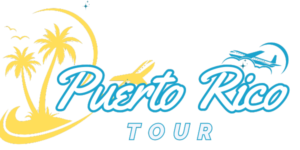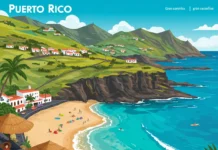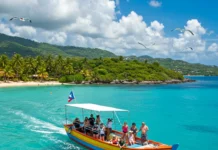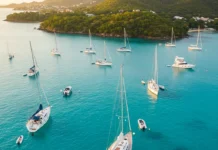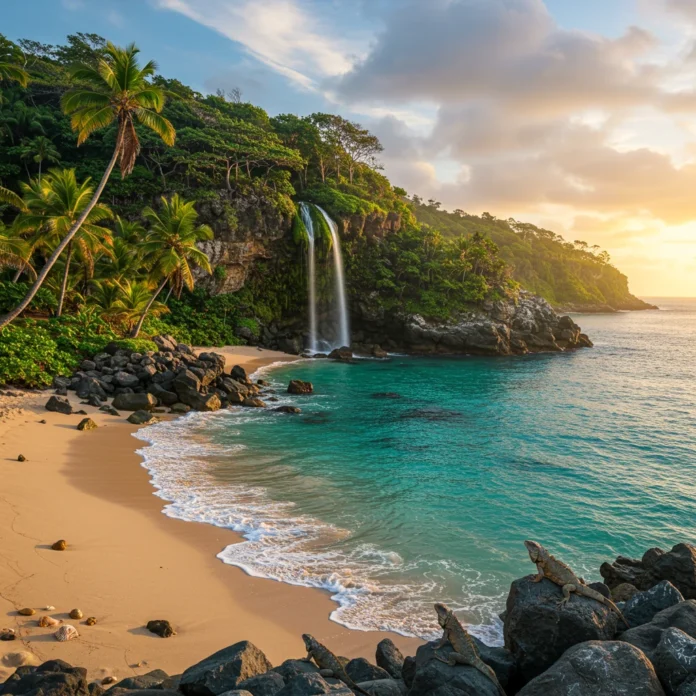Why Should We Seek Out Puerto Rico’s Hidden Gems?
Pursuing Puerto Rico’s hidden gems offers more than just a break from the familiar. These secluded spots promise tranquility, untouched natural beauty, and a sense of discovery that mass tourism rarely provides. When we venture off the main trail, we find places where the soft rustle of palm leaves, the scent of salt in the air, and the gentle rhythm of the waves combine to create unforgettable memories.
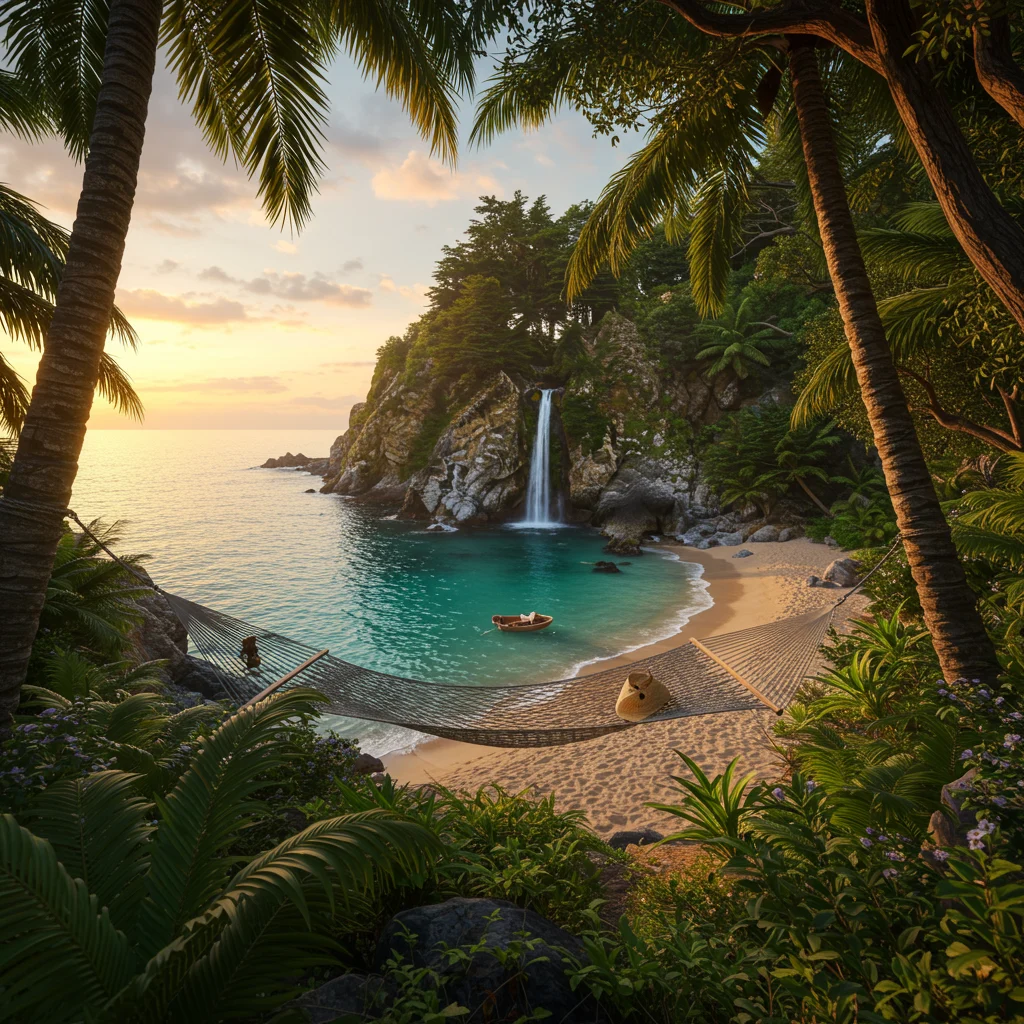
Exploring these lesser-known treasures grants us the privilege of experiencing the island’s authentic character. We engage with welcoming locals, savor traditional flavors, and witness landscapes that few others have seen. The allure of the unknown invites us to become part of Puerto Rico’s ongoing story.
What Makes Puerto Rico Stand Out Among Caribbean Destinations?
Puerto Rico distinguishes itself with its remarkable diversity—lush rainforests, dramatic mountains, arid coastal cliffs, and a vibrant cultural tapestry. Unlike many Caribbean islands, Puerto Rico offers a unique blend of Spanish colonial heritage, indigenous Taíno roots, and Afro-Caribbean influences, all reflected in its architecture, cuisine, and music.

Travelers can experience adventure, relaxation, and rich history without the need for a passport if coming from the United States. This accessibility, combined with a warm, resilient spirit, makes Puerto Rico a destination where every visit reveals something new.
A Brief Overview of Puerto Rico’s Geography and Climate
The island of Puerto Rico stretches approximately 100 miles long and 35 miles wide, featuring a central mountain range known as the Cordillera Central, lush rainforests to the east, and sun-drenched beaches along its coastlines. Its geography gives rise to microclimates—from cool, misty peaks to dry southern plains.

Puerto Rico enjoys a tropical marine climate, with warm temperatures year-round and brief, refreshing afternoon showers. The trade winds keep coastal areas comfortable, while the interior mountains can feel surprisingly crisp, especially in winter months. These varied landscapes set the stage for countless adventures.
What Are Puerto Rico’s Most Secluded Beaches?
Some of Puerto Rico’s most secret beaches lie far from the crowds, accessible only by winding coastal roads or hidden trails. These quiet shores offer soft sands, crystalline waters, and an atmosphere of peaceful solitude. Whether you seek a romantic retreat or a family picnic away from the bustle, these beaches provide the perfect backdrop.
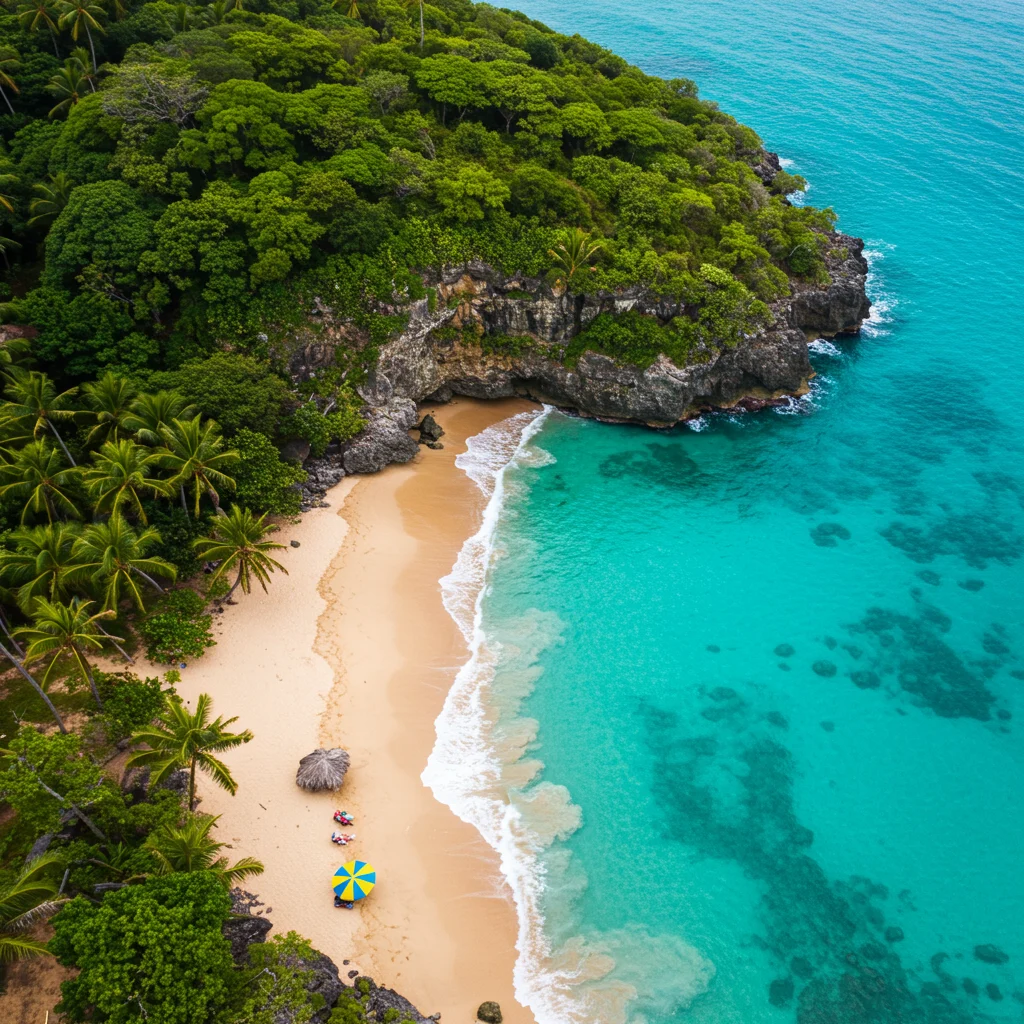
Playa Buyé: The Locals’ Favorite Escape
Located near the town of Cabo Rojo, Playa Buyé is beloved by residents for its calm turquoise water and gentle surf. The golden sand invites long walks, and the shade of almond trees offers respite from the midday sun. Vendors sell local treats, adding a taste of Puerto Rican hospitality.
Arrive early to claim a quiet spot, and listen for the laughter of families enjoying this tranquil haven.
Playa Escondida: Is This the Island’s Best-Kept Secret?
Hidden behind a mangrove forest near Fajardo, Playa Escondida remains one of the island’s most elusive beaches. The walk to reach it—along a shaded, sandy trail—feels like an adventure in itself. Upon arrival, visitors are rewarded with powdery sand and dramatic ocean views.
Strong currents make swimming risky, but the beauty of untouched nature makes this a photographer’s dream.
Playa Negra: The Mystique of Black Sand
On the island of Vieques, Playa Negra dazzles with its jet-black volcanic sand, contrasting sharply against the aquamarine water. The beach is accessed by a short hike through lush vegetation, where the sound of coquí frogs fills the air at dusk.
Visitors relish the rare sight of shimmering black sand under the Caribbean sun, making Playa Negra a true geological wonder.
Gilligan’s Island: How to Find This Hidden Oasis
Just off the southwest coast, Gilligan’s Island is a mangrove-fringed cay accessible only by kayak or small ferry. The water here is so clear that fish darting among the roots are visible from above. Gentle currents create natural “lazy rivers,” perfect for floating and snorkeling.
Pack a picnic, as there are no facilities—just the sound of the breeze and the gentle splash of water against your paddle.
How Can We Experience Puerto Rico’s Diverse Natural Landscapes?
From misty forests to glowing bays, Puerto Rico’s natural wonders offer endless variety. Each region reveals a different side of the island’s personality, inviting us to witness rare wildlife, hike scenic trails, and marvel at geological phenomena. For those seeking a deeper connection with nature, these landscapes offer both serenity and adventure.

El Yunque National Forest: More Than Meets the Eye
El Yunque is the only tropical rainforest in the U.S. National Forest System, alive with the calls of exotic birds and the scent of wild orchids. Mist drapes the canopy, and waterfalls tumble down mossy rocks, creating a sense of enchantment.
Secret Trails and Hidden Waterfalls in El Yunque
While popular trails draw crowds, those willing to venture deeper will find secluded paths leading to hidden pools and lesser-known cascades. The La Coca Trail, for example, offers a challenging trek to a secluded waterfall, where cool spray refreshes weary hikers. For more ideas on rainforest adventures, we recommend exploring our post on Puerto Rico Rainforest Adventures.
Wildlife Encounters: What Can You Spot in El Yunque?
El Yunque teems with life—from the vibrant Puerto Rican parrot to tiny coquí frogs whose chorus fills the night. Rare lizards dart across sunlit rocks, and butterflies flit among wild ginger. Observing these creatures in their natural habitat adds another layer of wonder to every visit.
Puerto Rico’s Underground World: Caves and Caverns
Beneath the island’s surface lies a labyrinth of caves and caverns, carved by centuries of water and wind. These subterranean spaces reveal ancient petroglyphs, dramatic stalactites, and echoing chambers that spark the imagination.
Cueva Ventana: The Window Cave Experience
Cueva Ventana sits high above the Río Grande de Arecibo valley, offering a panoramic “window” view framed by limestone walls. Guided tours illuminate the cave’s history, geology, and the legends that surround it. The cool, earthy air and distant call of birds create an atmosphere of mystery.
Camuy River Cave Park: An Underground Adventure
One of the largest cave systems in the Western Hemisphere, Camuy River Cave Park invites visitors to descend into a world of towering chambers and underground rivers. The sound of water rushing over rocks and the play of light on mineral formations make each step memorable.
Hidden Caves Off the Beaten Path
Adventurous souls can seek out lesser-known caves such as Cueva del Indio, where ancient Taíno carvings line the walls, or explore the unexpected marvels we highlighted in our article about hidden gems at Indian Cave.
Bioluminescent Bays: Nature’s Nighttime Light Show
Few experiences rival the magic of Puerto Rico’s bioluminescent bays, where microscopic organisms emit a blue-green glow when disturbed. Kayaking these waters on a moonless night feels otherworldly, as paddles and hands leave trails of sparkling light.
Mosquito Bay: The Brightest Bioluminescence in the World?
On Vieques, Mosquito Bay holds the Guinness World Record for the brightest bioluminescent bay. Every movement in the water sets off a shimmering display, enchanting visitors and inspiring awe at nature’s ingenuity.
Laguna Grande: How to Experience the Glow
Near Fajardo, Laguna Grande offers another opportunity to witness this phenomenon. Guided night tours by kayak or electric boat glide through mangrove tunnels, culminating in a lagoon alight with bioluminescence.
La Parguera: A Less Crowded Bioluminescent Option
For a quieter experience, La Parguera in Lajas allows visitors to swim directly in glowing waters. The sensation of bioluminescence swirling around your limbs creates memories that linger long after you leave.
Waterfalls You’ve Never Heard Of
Beyond the famous cascades, Puerto Rico hides waterfalls nestled in lush forests and secret valleys. These spots offer cool relief and the soothing sound of rushing water, far from the crowds.
Charco El Hippie: A Hidden Swimming Spot
Tucked in the mountains of Naguabo, Charco El Hippie features emerald pools surrounded by smooth boulders. Gentle waterfalls create natural slides, and the air is filled with birdsong and the scent of wildflowers.
Gozalandia Falls: Puerto Rico’s Secret Cascades
Near San Sebastián, Gozalandia Falls delights with its double-tiered waterfall and deep swimming holes. Adventurous visitors can leap from rocks into refreshing water, while others relax on sun-dappled banks.
Salto Curet: A Remote Waterfall Adventure
Reaching Salto Curet requires a hike through dense forest and across shallow streams. The reward is a secluded waterfall cascading into a clear pool, where the only sounds are the rush of water and the rustle of leaves overhead.
What Awaits in Puerto Rico’s Mountainous Interior?
The rugged heart of the island, dominated by the Cordillera Central, beckons travelers with its misty peaks, lush forests, and rural traditions. Here, the air is cooler, coffee plantations dot the hillsides, and the pace of life slows to match the gentle rhythm of nature.
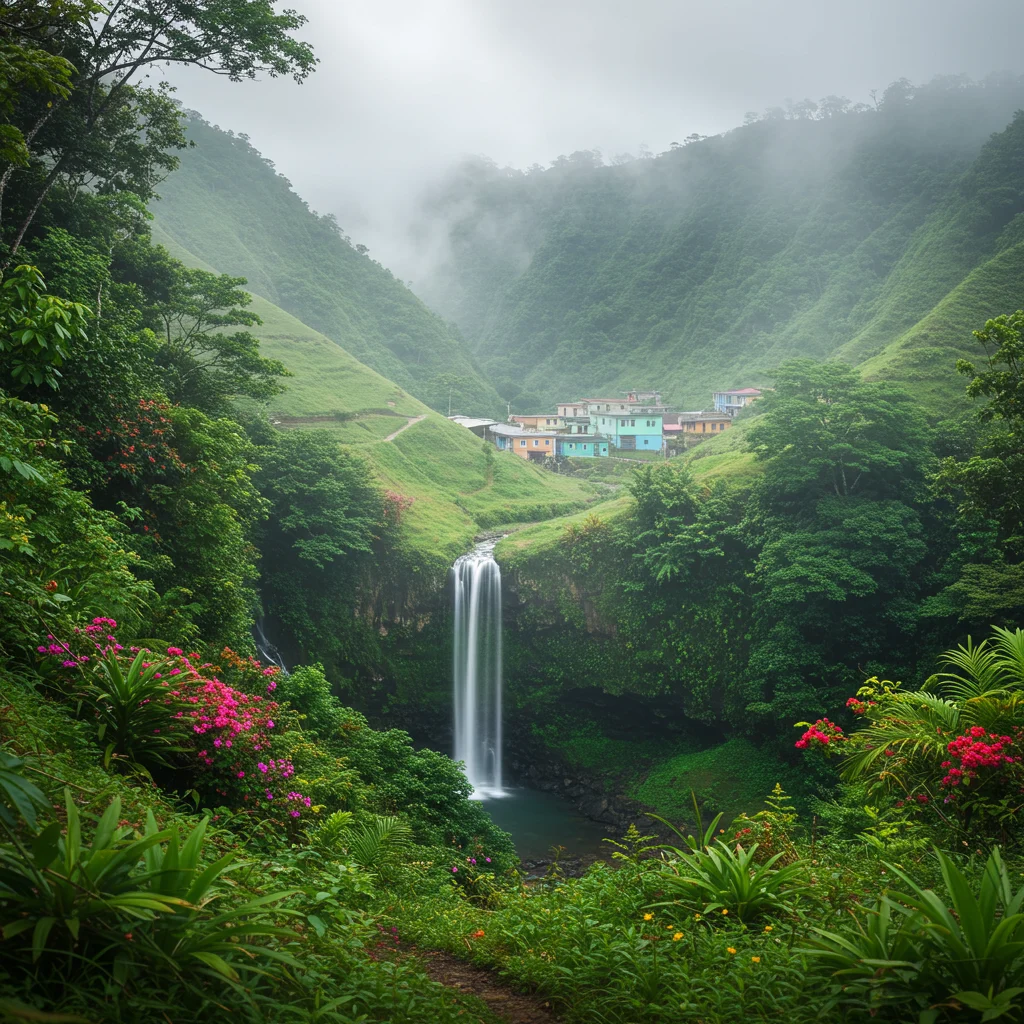
The Cordillera Central: What Awaits in the Heart of the Island?
This central mountain range forms the island’s backbone, offering dramatic vistas, winding roads, and cloud-kissed summits. The region is a haven for hikers, birdwatchers, and anyone seeking respite from coastal heat.
Toro Negro Forest Reserve: Hiking Above the Clouds
Toro Negro boasts high-altitude trails, misty forests, and waterfalls hidden among ferns. As we ascend, the scent of pine mingles with the freshness of mountain air, and views stretch across the island to distant shores.
Cerro de Punta: How to Reach the Island’s Highest Peak
At 4,390 feet, Cerro de Punta stands as Puerto Rico’s highest point. The summit can be reached by a combination of driving and hiking, and rewards visitors with panoramic views that, on clear days, span from coast to coast.
Coffee Plantations: Savoring Puerto Rico’s Mountain Flavors
The mountains are the birthplace of Puerto Rican coffee, renowned for its smooth, rich flavor. Family-run farms invite visitors to learn about cultivation, harvesting, and the island’s proud coffee heritage.
Visiting Family-Owned Coffee Farms
Many haciendas open their doors to guests, offering tours that wind through lush coffee groves. The aroma of roasting beans fills the air, and hosts share stories passed down through generations.
Coffee Tasting Tours: What to Expect
On a tasting tour, we sample a variety of roasts while learning about the unique characteristics of Puerto Rican beans. The experience often ends with a cup enjoyed on a breezy veranda, overlooking green hills and sun-dappled valleys.
What Secret Islands and Offshore Escapes Await?
Off Puerto Rico’s coast lie smaller islands and cays, each with its own charm. Whether we seek wild horses, coral reefs, or unspoiled beaches, these offshore escapes invite us to experience a different side of the archipelago.
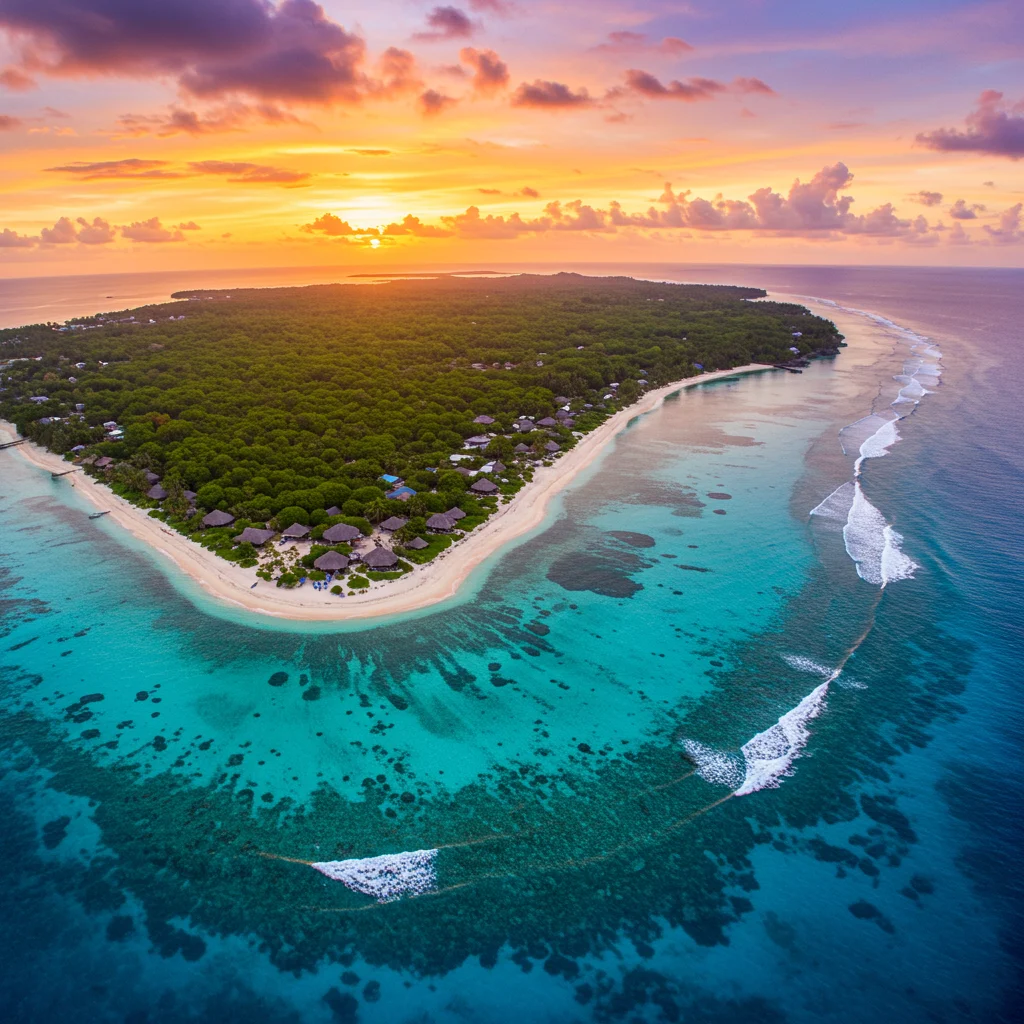
Vieques: More Than Just Mosquito Bay
Vieques offers pristine beaches, bioluminescent waters, and a landscape dotted with wild horses. The island’s untamed beauty is matched by a laid-back atmosphere, making it ideal for quiet reflection or romantic getaways.
Exploring Vieques’ Hidden Beaches and Wild Horses
Secluded coves such as Playa La Chiva and Playa Caracas offer powdery sand and calm waters. Herds of wild horses often graze nearby, their silhouettes striking against the sunset. Exploring these beaches on foot or by kayak reveals countless private corners.
Culebra: Is Flamenco Beach the Only Draw?
While Flamenco Beach draws international acclaim, Culebra also boasts vibrant coral reefs and tranquil bays perfect for snorkeling and relaxation.
Snorkeling at Tamarindo and Carlos Rosario Beaches
The reefs off Tamarindo and Carlos Rosario beaches teem with colorful fish, sea turtles, and delicate corals. Clear, warm water and gentle currents make these spots ideal for both beginners and seasoned snorkelers.
Day Trips to Isla de Mona: Puerto Rico’s Galápagos
Known as the “Galápagos of the Caribbean,” Isla de Mona is a protected nature reserve home to rare species and dramatic limestone cliffs. Access is limited to preserve its fragile ecosystems.
How to Visit Isla de Mona Responsibly
Permits are required, and visits are typically arranged with licensed tour operators. Respect for wildlife and strict adherence to conservation guidelines are essential. The reward is a pristine wilderness, where solitude and natural beauty reign supreme.
Where Can We Find Secret Natural Pools and Swimming Holes?
Puerto Rico’s rivers and forests hide natural pools where cool, clear water gathers in emerald basins. These spots offer refreshing escapes from tropical heat and invite us to linger in nature’s embrace.
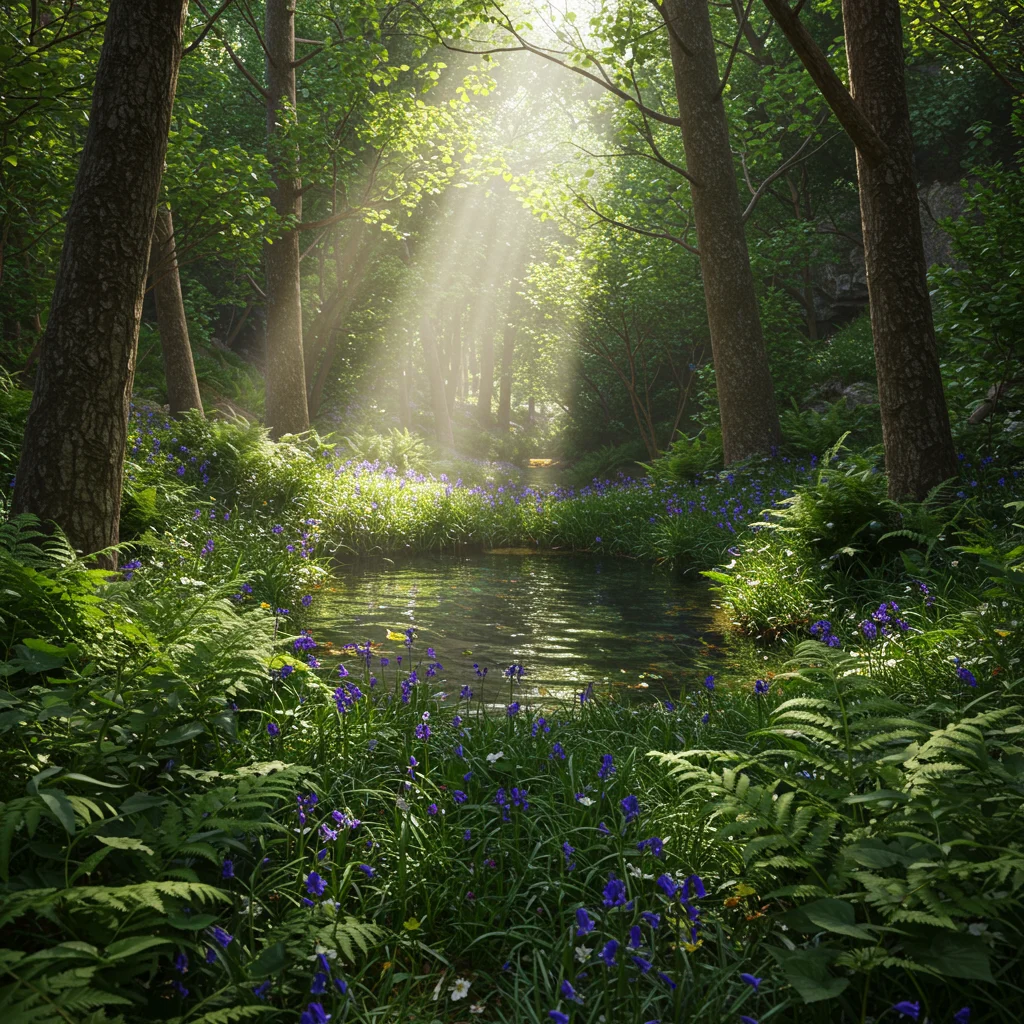
Charco Azul: Where to Find This Turquoise Gem
Near the town of Patillas, Charco Azul lives up to its name with strikingly blue water surrounded by lush vegetation. Sunlight filters through the canopy, painting the surface with dappled light. The pool’s cool depths are perfect for swimming on hot afternoons.
Las Tinajas: Sliding Down Natural Rock Slides
In Fajardo, Las Tinajas features a series of pools and smooth rock slides. The sound of rushing water and the laughter of visitors create an atmosphere of joyful adventure. A short hike through the forest leads to this hidden playground.
Charco Prieto: An Off-the-Grid Adventure
For those seeking solitude, Charco Prieto near Bayamón rewards persistence with a dramatic waterfall and a deep, secluded pool. The trail is challenging, but the sense of accomplishment—and the cool embrace of the water—make it worthwhile.
Are There Hidden Coastal Trails and Clifftop Views?
The island’s coastline offers dramatic cliffs, secret trails, and panoramic vistas. Walking these paths, we hear the crash of waves far below and feel the spray of salt on the breeze. Each viewpoint offers a new perspective on Puerto Rico’s rugged beauty.
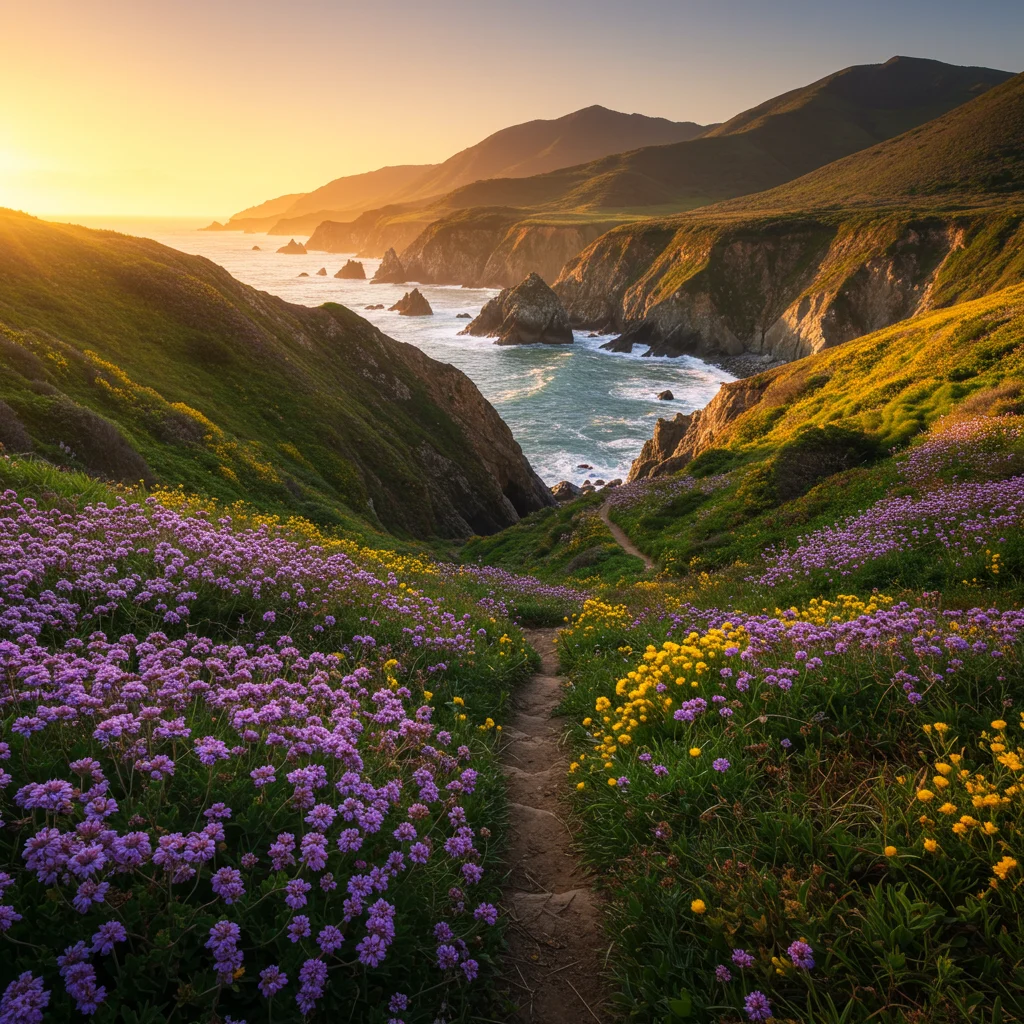
La Zanja: Discovering the Island’s Natural Jacuzzi
Near Loíza, La Zanja is a narrow channel carved by the sea into coastal rock. At low tide, waves fill this “natural jacuzzi,” creating a bubbling, refreshing pool with sweeping views of the Atlantic.
The Cabo Rojo Cliffs: How to Get the Best Views
The red limestone cliffs of Cabo Rojo rise above turquoise waters, crowned by a historic lighthouse. A short hike rewards visitors with breathtaking vistas and the scent of salt carried by steady trade winds.
Secret Hiking Trails for Adventure Seekers
Unmarked paths wind through coastal forests and along windswept bluffs. These trails reward curiosity with hidden beaches, dramatic overlooks, and the sense of discovery that comes only from forging your own way. For more inspiration, our article on Puerto Rico’s top must-see natural attractions highlights some of these unforgettable spots.
Where Are Puerto Rico’s Best Wildlife Sanctuaries and Birdwatching Hotspots?
Puerto Rico provides sanctuary to hundreds of bird species, rare reptiles, and unique flora. These protected areas invite quiet observation and a deeper appreciation for the island’s ecological riches.
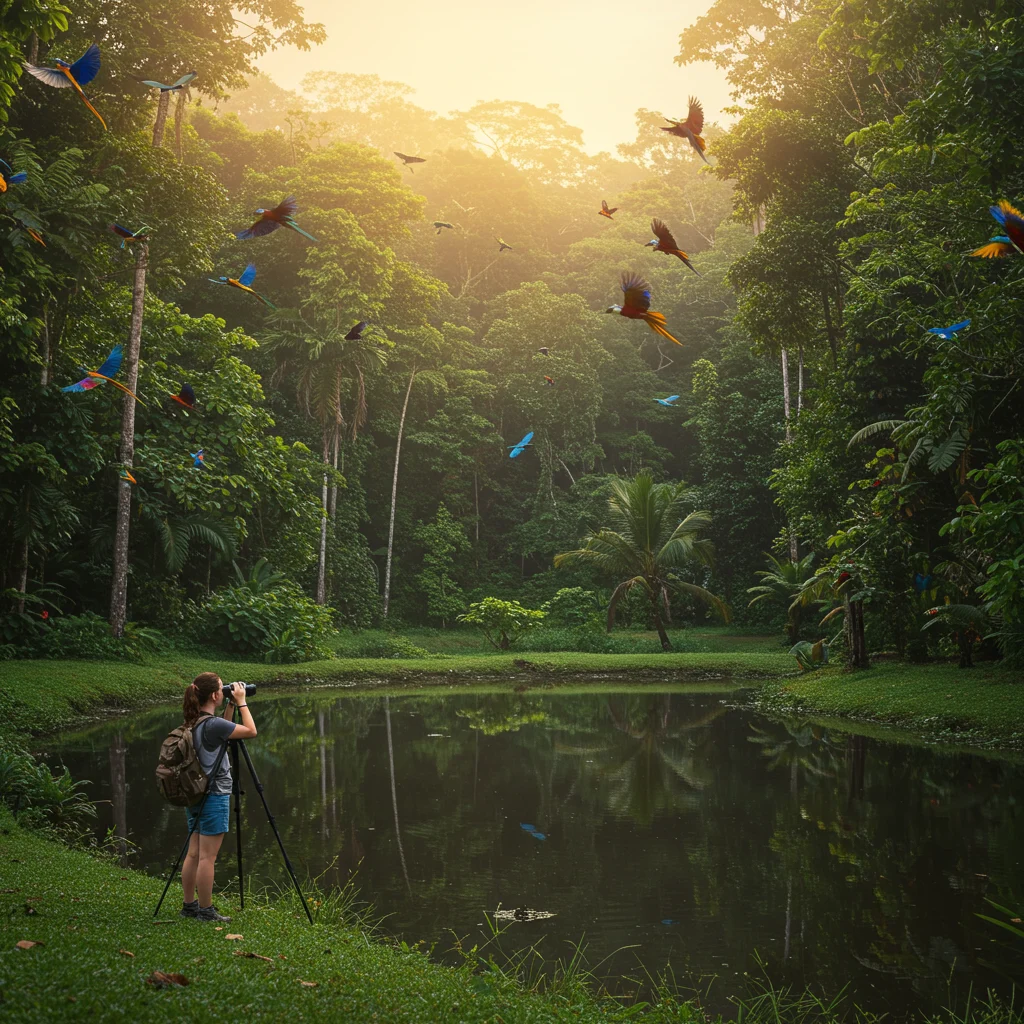
Guánica Dry Forest: Exploring a Unique Ecosystem
The Guánica Dry Forest contrasts sharply with the island’s rainforests, featuring cacti, thorny shrubs, and a chorus of songbirds. Trails wind through sunbaked groves, where the scent of earth and wild sage lingers in the air.
Las Cabezas de San Juan Nature Reserve: A Birdwatcher’s Paradise
This coastal reserve in Fajardo encompasses mangroves, lagoons, and coral reefs. Birdwatchers flock here to spot herons, egrets, and the rare Puerto Rican woodpecker. Sunrise paints the water gold, and the air fills with the rustle of wings.
Where to Spot Rare and Endemic Species
Endemic creatures such as the Puerto Rican tody and the endangered Puerto Rican parrot find refuge in protected areas like El Yunque and the Maricao State Forest. Patient observers may also glimpse hawks, bats, and brilliant butterflies.
What Are Puerto Rico’s Hidden Historical and Cultural Sites?
Beyond San Juan’s famous forts, Puerto Rico’s history lives on in small towns, ancient ruins, and vibrant local traditions. These sites offer insight into the island’s layered past and the enduring spirit of its people.
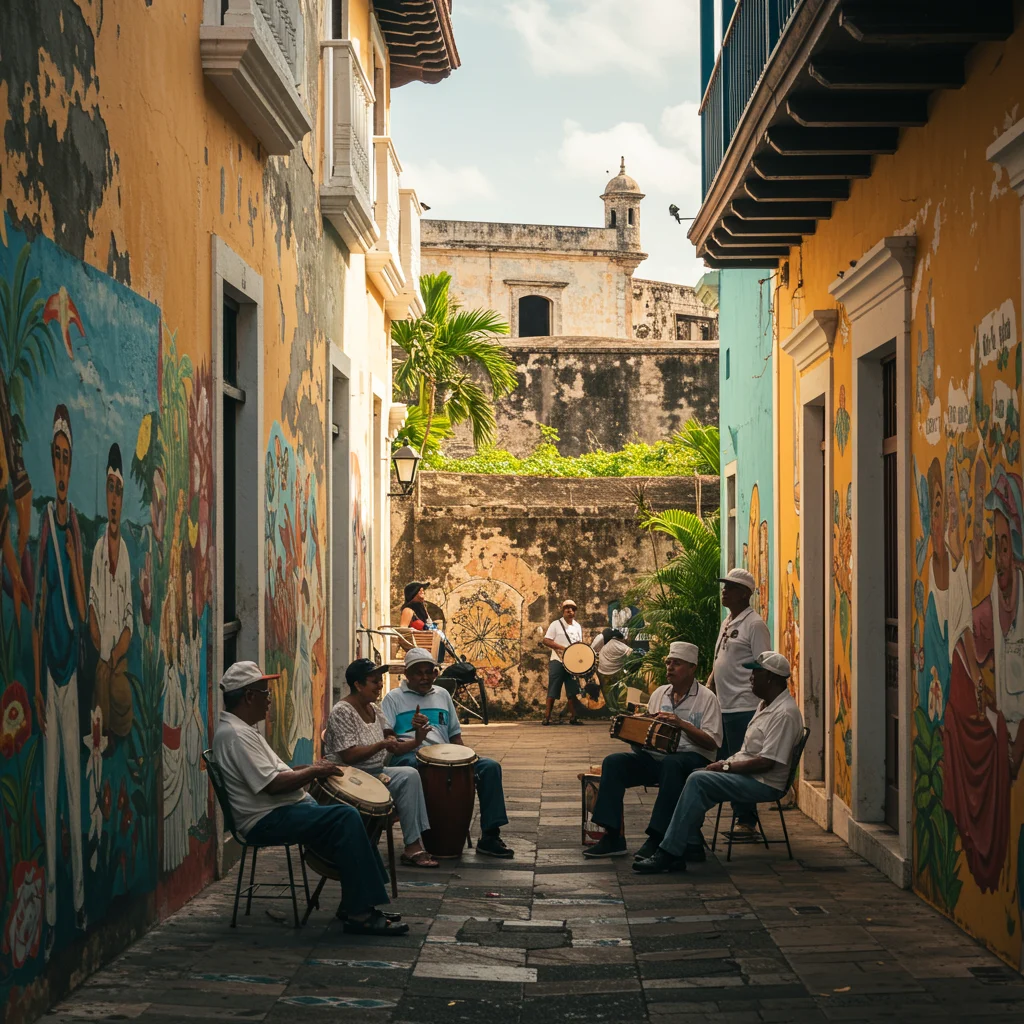
What Are Puerto Rico’s Lesser-Known Heritage Towns?
Charming plazas, pastel-colored buildings, and cobblestone streets await in towns where history whispers from every corner. These towns invite unhurried strolls and heartfelt connections with local residents.
San Germán: Colonial Charm Off the Tourist Trail
San Germán boasts one of the oldest settlements in the Americas. Its historic center features 18th-century churches, shady squares, and a welcoming, small-town ambiance far from the crowds of San Juan.
Jayuya: The Heart of Taíno Culture
In the central mountains, Jayuya celebrates its indigenous Taíno heritage through museums, petroglyphs, and festivals. The town’s setting—surrounded by peaks and swirling mists—adds a sense of timelessness to every visit.
Secret Forts and Ruins You Can Explore
Scattered across the island, lighthouses and ruins tell stories of pirates, sugar barons, and colonial struggles. These sites, often overlooked by guidebooks, offer quiet reflection and sweeping views.
Faro Los Morrillos: A Lighthouse with a View
Perched atop Cabo Rojo’s cliffs, Faro Los Morrillos commands stunning vistas of the Caribbean Sea. The lighthouse, built in 1882, stands watch over red cliffs and turquoise bays, its white tower a beacon for travelers.
Ruins of Aguadilla’s Old Sugar Mills
In Aguadilla, the crumbling remains of 19th-century sugar mills evoke the island’s agricultural past. Ivy climbs stone arches, and the scent of sea air drifts through empty windows, creating an atmosphere both haunting and beautiful.
Art, Music, and Festivals in Small Towns
The soul of Puerto Rico shines brightest in its local celebrations—colorful festivals, impromptu street music, and vibrant murals. These expressions of creativity connect us to the island’s living culture.
How to Experience Local Fiestas and Traditions
From the Festival de las Máscaras in Hatillo to the harvest fiestas in mountain villages, local events invite visitors to dance, taste, and celebrate alongside residents. The air pulses with drumbeats and the aroma of roasting pork.
Street Art in Ponce and Santurce
Murals by local artists transform neighborhoods in Ponce and Santurce into open-air galleries. Vivid colors, swirling patterns, and powerful messages reflect the island’s struggles and hopes, turning every walk into a visual feast.
Where Can You Find Authentic Puerto Rican Cuisine Off the Beaten Path?
For those eager to sample authentic Puerto Rican cuisine, venturing beyond tourist hubs reveals a world of flavors. Roadside stands, mountain inns, and rural markets serve dishes rooted in tradition and crafted with care.

Hidden Lechoneras: The Art of Roast Pork
Along the legendary “Pork Highway” in Guavate, lechoneras roast whole pigs over open fires. The crackle of skin, the aroma of spices, and the communal atmosphere make for an unforgettable meal.
Local Markets and Roadside Eateries
In towns and villages, open-air markets brim with fresh fruit, fried snacks, and homemade sweets. Roadside kiosks offer empanadillas, alcapurrias, and icy piraguas, all bursting with local flavor.
Farm-to-Table Dining in the Mountains
Mountain restaurants champion farm-to-table dining, highlighting seasonal produce, artisanal cheeses, and locally sourced coffee. Meals are often enjoyed on breezy terraces overlooking misty valleys.
What Adventure Activities Await in Puerto Rico’s Wild Corners?
For thrill-seekers, Puerto Rico’s rugged terrain provides endless opportunities for adventure. From subterranean exploration to surfing hidden breaks, the island rewards curiosity and courage.
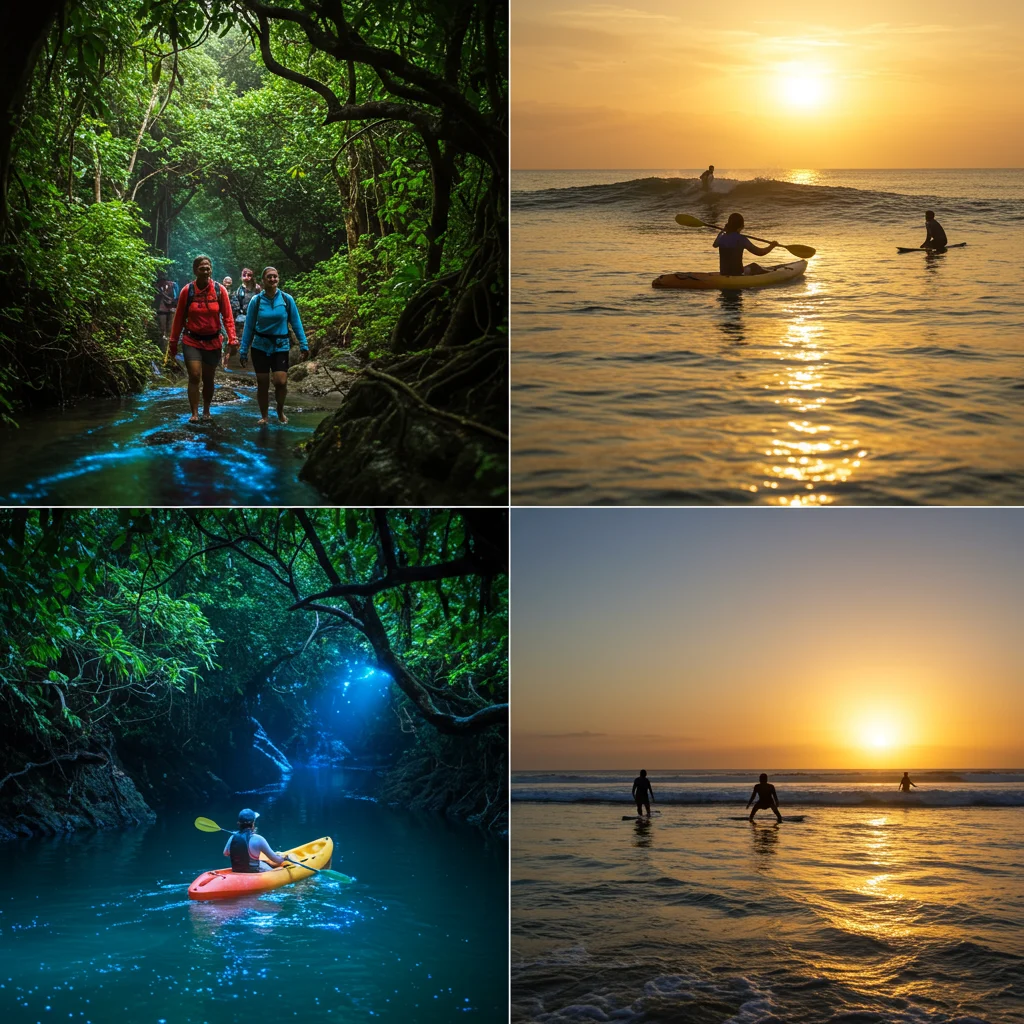
Caving, Rappelling, and Rock Climbing Adventures
Experienced guides lead excursions into remote caves, where rappelling down limestone cliffs and exploring echoing chambers test both nerve and skill. The cool darkness, punctuated by shafts of sunlight, adds a sense of drama to every step. For those eager to try guided adventures, our post on exploring Puerto Rico’s natural wonders on a guided tour offers practical tips.
Kayaking and Paddleboarding in Secret Spots
Quiet mangroves and hidden lagoons offer perfect conditions for kayaking and paddleboarding. Gliding silently over glassy water, we spot herons hunting in the reeds and rays gliding beneath the surface.
Surfing Hidden Breaks: Where to Catch the Best Waves
While Rincon is famous for its surf, lesser-known breaks along the northwest and southeast coasts challenge even seasoned surfers. Early mornings bring glassy waves, cool breezes, and the thrill of riding untouched swells.
What Are the Best Eco-Friendly and Responsible Travel Tips?
Preserving Puerto Rico’s natural beauty requires thoughtful, responsible travel. By minimizing our impact, we help maintain the island’s pristine landscapes and vibrant communities for generations to come.
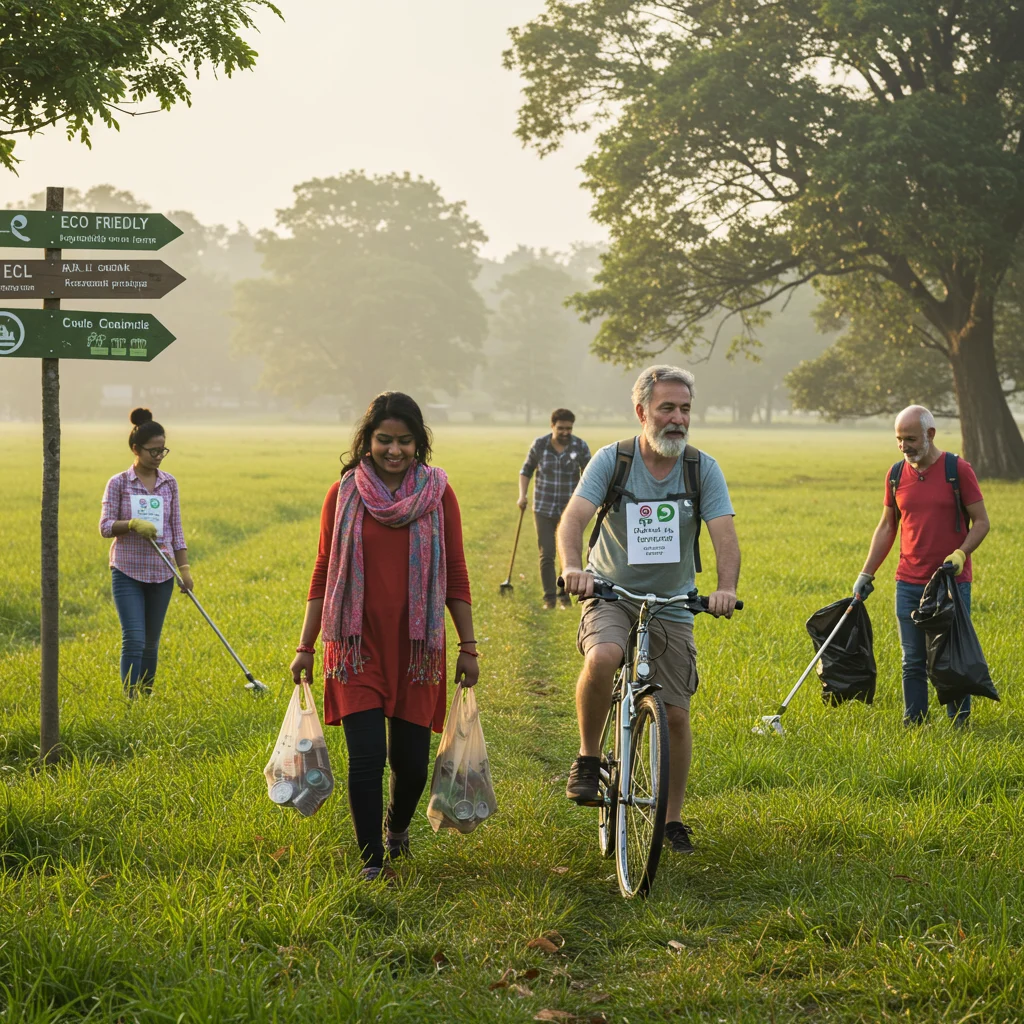
How to Protect Puerto Rico’s Fragile Ecosystems
We can protect sensitive environments by sticking to marked trails, avoiding single-use plastics, and never disturbing wildlife. Supporting conservation initiatives and choosing eco-certified tours further reduces our footprint.
Supporting Local Communities and Businesses
When we shop at local markets, dine in family-owned restaurants, and stay in community-run guesthouses, we contribute directly to Puerto Rico’s economic resilience. These choices foster authentic connections and help preserve cultural traditions.
When Is the Best Time to Visit Puerto Rico’s Secret Treasures?
Puerto Rico welcomes visitors year-round, but the best time to seek out its hidden gems is during the dry season, from December to April. During these months, the weather is reliably warm, trails are accessible, and beaches are at their most inviting.
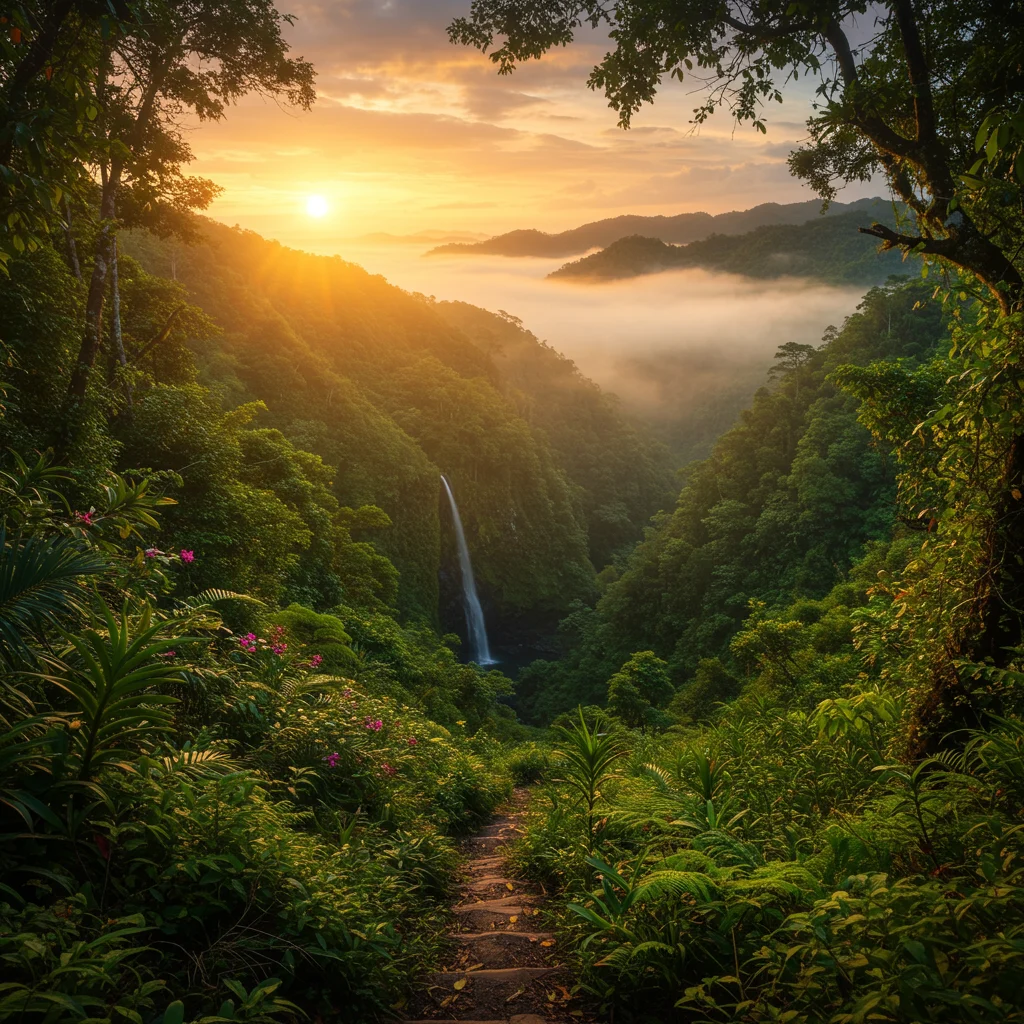
Traveling in the shoulder seasons—late spring or early fall—offers fewer crowds and a more intimate experience. Rain showers are short-lived, and the island’s lush landscapes are especially vibrant.
What Are the Essential Tips for Exploring Off-the-Beaten-Path in Puerto Rico?
Venturing off the main tourist track brings rewards and challenges. Preparation, flexibility, and respect for local customs enhance every journey.
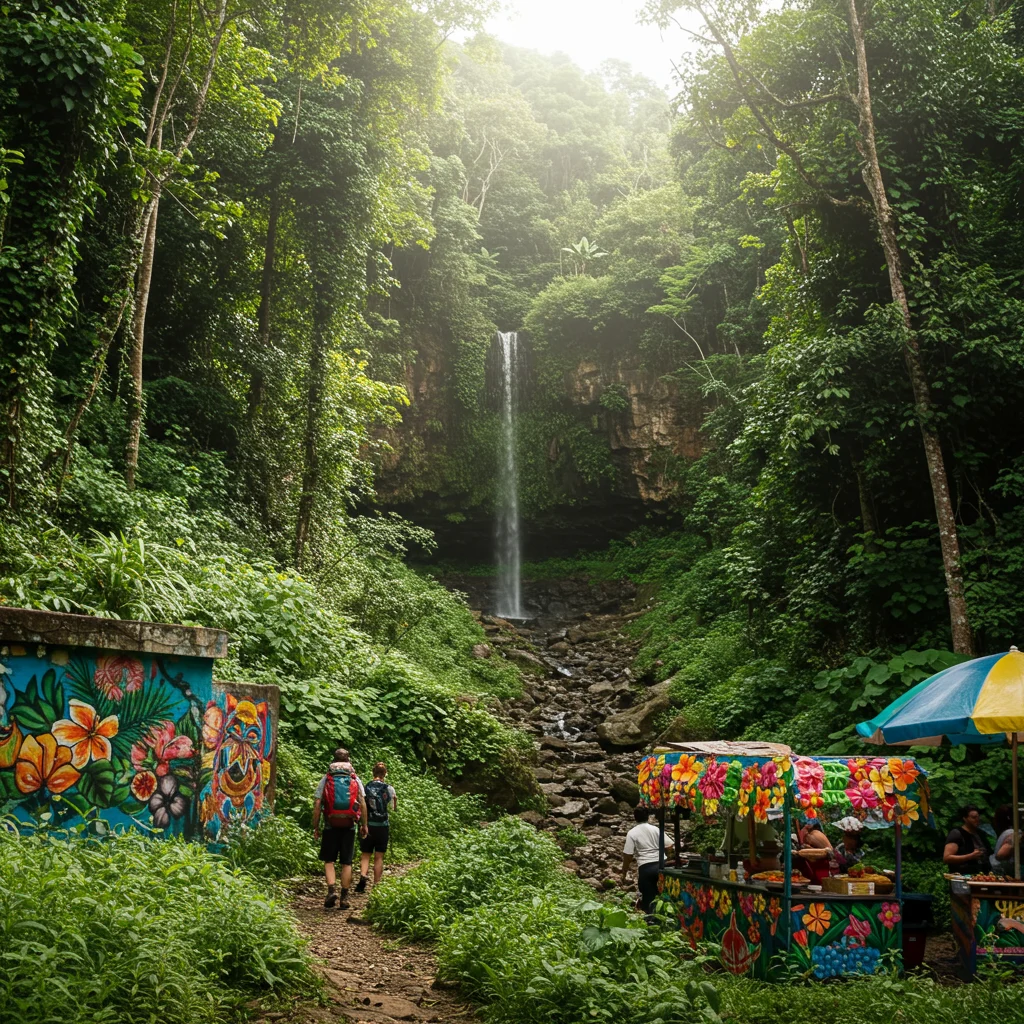
Safety and Accessibility Considerations
Remote areas may lack cell service or signage, so we recommend informing someone of your plans and traveling with a companion when possible. Carry a basic first-aid kit, and be cautious when swimming or hiking in unfamiliar locations. For more insights on preparing for adventure, see our post on Puerto Rico’s lesser-known treasures.
Packing Essentials for Island Adventures
Sturdy footwear, sun protection, insect repellent, and plenty of water are essential for off-the-beaten-path adventures. Lightweight rain gear and a reusable bag for trash help minimize your impact and keep you comfortable.
How to Get Around: Transportation Tips
Renting a car offers the greatest flexibility for reaching remote beaches, mountain towns, and hidden trails. Public transportation is limited outside major cities, so plan routes in advance and allow extra time for winding roads and unexpected detours.
Conclusion: Start Your Puerto Rican Adventure Today!
From secluded beaches and glowing bays to mountain forests and vibrant villages, Puerto Rico’s secret treasures invite us to experience the island in all its depth and diversity. Every hidden path, every quiet cove, and every warm encounter adds a new chapter to our story of discovery. Let’s answer the call of adventure and seek out these unforgettable places—your journey begins with Puerto Rico Tour.
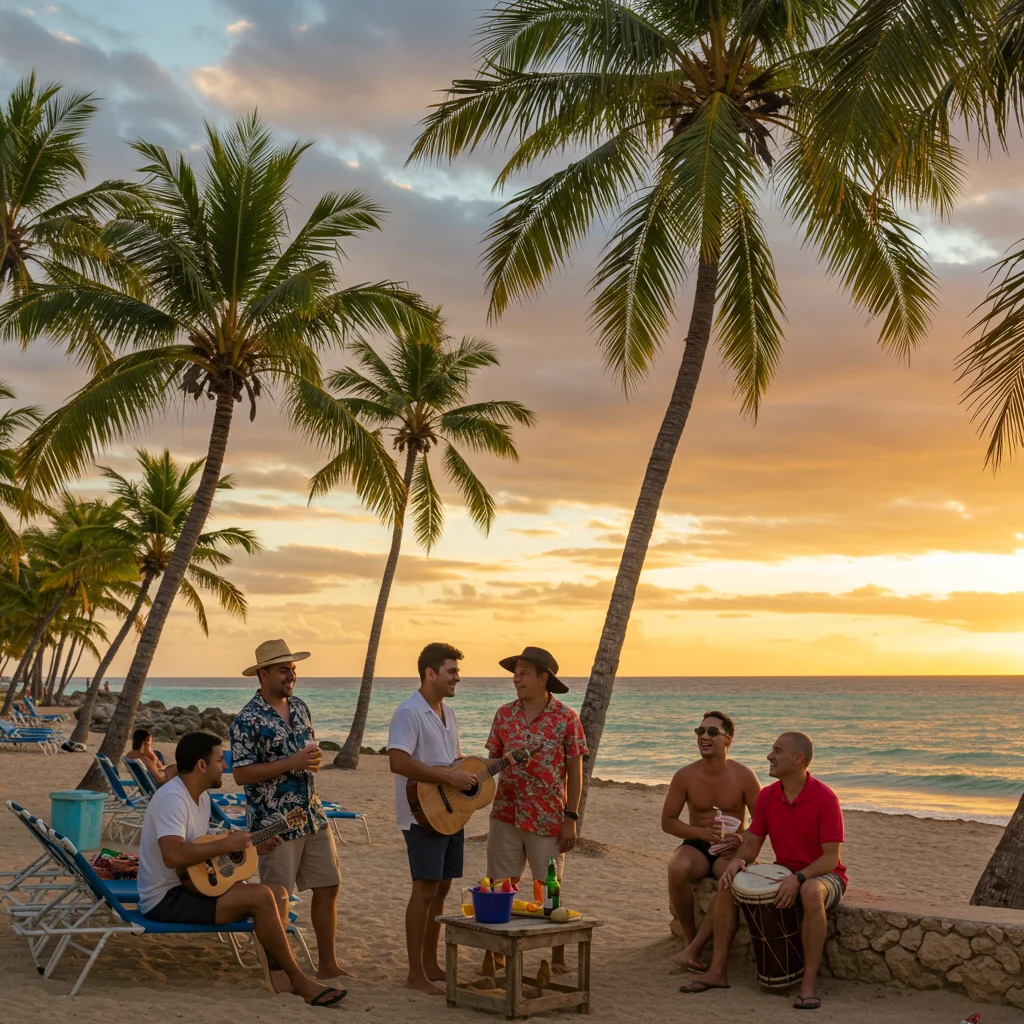
Frequently Asked Questions About Puerto Rico’s Hidden Gems
What is the best way to find hidden beaches in Puerto Rico?
We recommend asking locals for recommendations, exploring with a rental car, and using satellite maps to identify less-trafficked areas. Guided tours can also reveal secret spots that aren’t widely publicized.
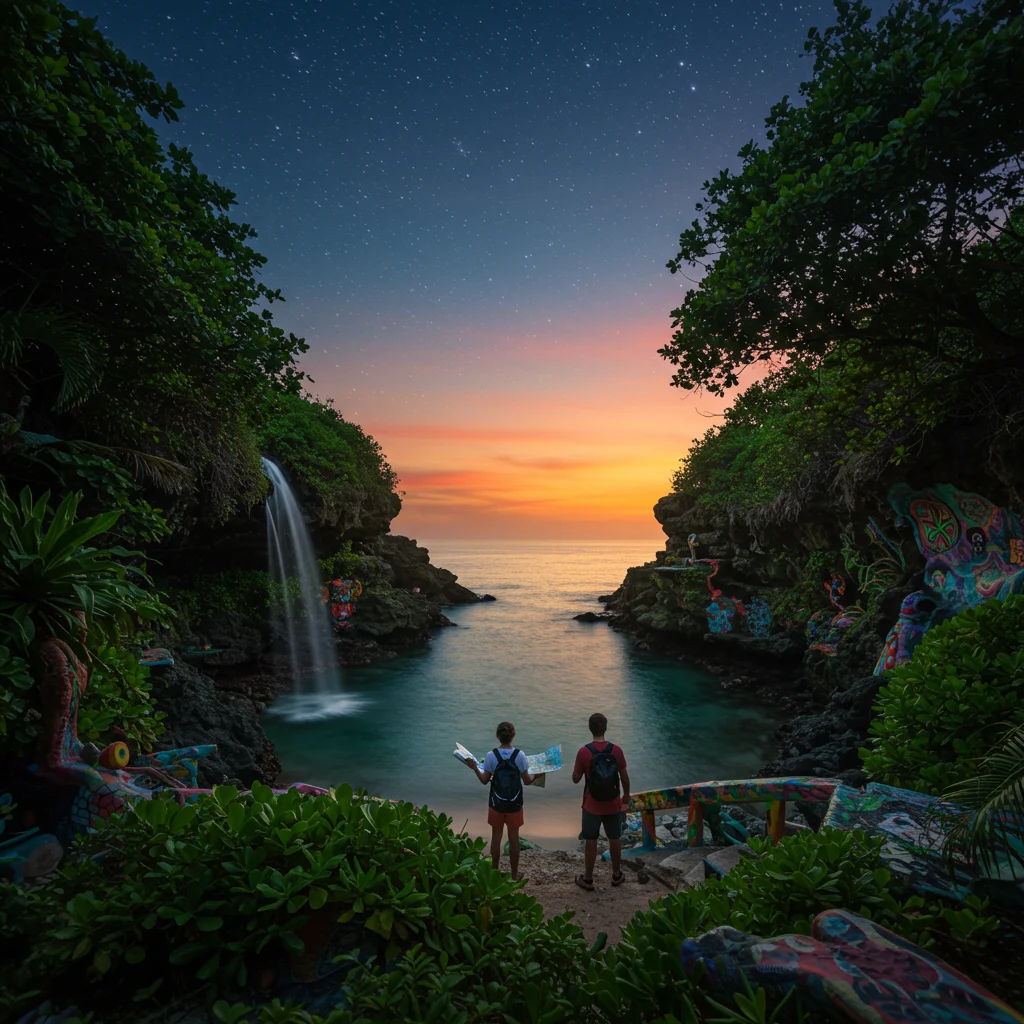
Are remote areas of Puerto Rico safe for travelers?
Most off-the-beaten-path destinations are safe, but it’s wise to travel with a companion, inform someone of your plans, and carry essentials like water and first aid. Always respect local advice and posted signs.
Do I need special permits to visit natural reserves or protected areas?
Some areas, such as Isla de Mona or certain caves, require advance permits or guided access. Research requirements ahead of time and book with reputable operators where needed.
What should I pack for exploring Puerto Rico’s wild places?
Bring sturdy shoes, sun protection, insect repellent, a reusable water bottle, and lightweight rain gear. Extra snacks and a portable phone charger are also helpful for longer excursions.
How can I travel responsibly and support local communities?
Choose locally owned accommodations and restaurants, respect wildlife and natural habitats, and minimize your environmental impact by packing out all trash and using refillable containers.
As experts often say:
“The greatest adventures are found where the map ends and curiosity begins.”
